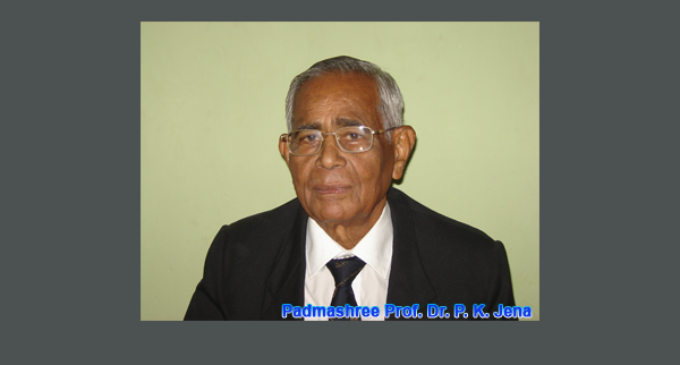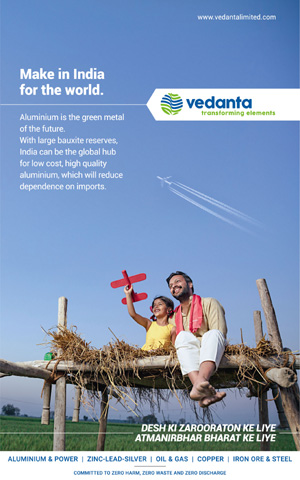Global Scenario on Harnessing Wind Energy

Padmashree Prof. Dr. P. K. Jena
The Energy resource on this planet is very important for mankind as it is one of the basic needs for various socio economic developments. With increasing population and various developmental activities, the present world is facing acute shortage of the required energy in various sectors. Presently, 84 pct. of the world energy requirement is met from fossil fuels. In view of fast depletion of fossil fuels and their adverse effect on environment as well as the health of all living beings due to the release of large amounts of green house gases like carbon dioxide, oxides of nitrogen and sulphur as well as the particulate matters, it has been essential to harness clean energy from various renewable sources like wind, sun, biomass, geothermal, and small hydro power.
At present, a mere 16% of global energy consumption is met from renewable resources. Therefore, various efforts are being made all over the world to harness energy as much as possible from the renewable sources like wind in order to minimize the use of fossil fuels. Wind power is the conversion of wind energy into a useful form of energy, such as using wind turbines to make electrical power, windmills for mechanical power, windpumps for water pumping or drainage, or sails to propel ships etc.
During these years, all over the world the wind power has become highly popular as it is environment friendly and the technologies have been developed to make it competitive with other energy resources particularly the fossil fuel. The technologies include taller turbine towers of the order of 110 meters and higher, more powerful rotors, and digital innovations such as General Electric’s recent Digital Wind Farm package that can increase output by as much as 20%.
The renewable energy from wind is found to be the fastest growing sector all over the world with an average annual growth of 25%. The installed capacity of wind energy generation increased from 60 GW to 160 GW from the year 2002 to 2010 and it was expected to increase to 460 GW by the end of 2015. At present, nearly 83 countries in the world are harnessing some amount of wind energy and in certain cases supplying the generated power to electricity grid. In 2010, the wind energy production was only 2.5% of the total electricity used in the world. It is note worthy that, a small country like Denmark is generating more than 25% of its electricity from wind power. The total global installed capacity of wind energy up to the middle of 2013 was 296,065 Mw.
It being very easy to harness energy from wind, in about 15 years the global installed capacity of the wind mill has increased to about 50 times within 1996 to 2012. The market shares of top five wind turbine manufacturing countries (namely China, USA, Germany, India and Spain) in the world are given in Table – 1.
Table – 1
Major Wind Turbine Manufacturing Countries in 2012
| Sl.No. | Country | Pct. |
| 1 | GERMANY | 17.7 |
| 2 | China | 16.6 |
| 3 | USA | 15.5 |
| 4 | DENMARK | 14.0 |
| 5 | INDIA | 7.4 |
| 6 | SPAIN | 6.1 |
| 7 | OTHERS | 22.7 |
The major ten wind turbine manufacturing companies areGE Wind (USA), Vestas (Denmark), Siemens Wind Power (Germany), Enercon (Germany), Suzion Group (India), Gamesa (Spain), Goldwind (China), United Power (China), Sinovel (China) and Mingyang (China).
The global wind power installed is 238,351MW in the year 2011, an increase in total installed generating capacity of nearly 75% over the period of 2005–2011. Among the top 10 wind power producing countries in the world, the leading country is China with the installed capacity of 62,733 MW at the end of 2011 and this is around 98% growth over the
period of 2005–2011. The next highest wind power developing countries are France, Canada, USA and UK with the growth rate of around 88%, 87%, 80% and 79% respectively from the year 2005 to 2011.
Followings are some of the important facts about harnessing wind power in the world.
- In 2011, worldwide wind energy capacity reached 238,351 MW, out of which 40,714 MW was added from 2010 to 2011, slightly greater than 2009–2010.
- All the wind turbines installed worldwide by the end of 2010 could generate 430 TWh energy per annum which was equal to 2.5% of the global electricity consumption.
- China has overcome USA in total wind power installed capacity and added around 18,928 MW within 1 year, accounting for more than 50% of the world market of new wind turbines.
- Germany keeps its number one position in Europe with wind installed capacity of 27,215 MW, followed by Spain with less than 6539 MW.
- Asia accounted for the largest share of new wind turbine installations around 54.6% whereas Europe stayed at the 2nd position with the installations of around 27%.
- World Wind Energy Association (WWEA) estimated that a global capacity of 600,000MW was possible by the year 2015 and if the growth was continued in the same trend then more than 1,500,000 MW could have been achieved by the year 2020.
The modern wind turbine has many advantages and it is modular and easy to install according to electricity supply and demand. Further, harnessing wind power, the system is less capital intensive and simple in construction and easy to maintain and operate. At present, with advance technologies by using longer and stronger turbine blades made from advance materials and design, it has been possible for the turbine to produce power much more efficiently. It is claimed that, large wind turbines which have been recently developed, can be price competitive with any other form of energy. The global wind power installed was only 238351 MW in the year 2011. As technology is available to produce energy from wind power in competitive price with any other form of energy, most of the countries in the world should make consolidated effort to produce and use wind energy and thereby cut down appreciably the use of fossil fuels. This will help in reducing global warming and keeping the earth environment clean.
)The author is former Director General, Council of Scientific & Industrial Research, India. He is at present Founder Chairman, Institute of Advance Technology & Environmental Studies (IATES) and Founder President, Natural Resources Development Foundation (NRDF). He can be reached at prof.pkjena_iates@yahoo.com)






